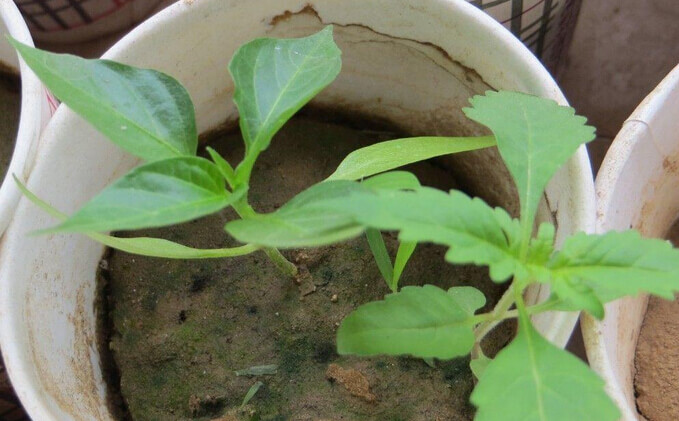Most importantly, vegetables grown with fish intestine fertilizer have distinct advantages. They develop stronger disease resistance, reducing pest infestations. With balanced nutrient supply, the vegetables taste tender and significantly sweeter, recreating the "flavor of childhood" — healthy and delicious.

Lidded plastic bucket: A 5-liter cooking oil bucket is preferred for its durability and good sealing. Larger buckets can be used based on the amount of fish intestines, but ensure the lid fits tightly.
Collected fish intestines: Thawed intestines with the gallbladder removed.
Ordinary garden soil: General-purpose garden soil from gardens or flower markets works; no need for nutrient-rich soil. Garden soil’s permeability and water retention are better for fermentation.
Orange/ grapefruit/ lemon peels: Peels from daily fruit consumption. They are natural "odor neutralizers," counteracting fermentation odors and adding a faint fruity scent.
Clean the container: Thoroughly wash the plastic bucket to remove oil residues and impurities, then dry in a ventilated area. Ensure no moisture or oil remains to prevent mold growth during fermentation.
Add a bottom layer of soil: Place a 5 cm-thick layer of garden soil at the bottom of the dried bucket. This layer isolates the bucket bottom, prevents direct contact between intestines and the bucket wall, and provides a basic microbial environment for fermentation.
Add fish intestines: Spread a 2-3 cm-thick layer of fish intestines evenly over the bottom soil. Avoid piling intestines too thickly or densely to ensure uniform fermentation.
Cover and seal: Fully cover the intestines with garden soil. Ensure sufficient thickness to completely wrap the intestines and prevent direct contact with air — this is key to reducing odors and pests.
Repeat layering: Alternate layers of "garden soil + fish intestines" until the bucket is 5-10 cm from full. Leave space to prevent fertilizer overflow during fermentation.
Final layer and odor prevention: Add a 10 cm-thick layer of garden soil as the top layer, ensuring it is flat and compact. Tear orange/ grapefruit/ lemon peels into small pieces, spread them on top of the final soil layer or bury them slightly. The peels’ fragrance effectively neutralizes fermentation odors.
Seal for fermentation: Tighten the lid, but do not seal completely — leave a small gap or poke 5-10 holes in the lid with a needle. This prevents dust and pests from entering while allowing gas release, avoiding excessive pressure and bucket explosion.
Storage and waiting: Place the bucket in a cool, ventilated area such as a balcony corner or hallway, avoiding direct sunlight. Direct sunlight raises the bucket temperature, accelerating water evaporation and destabilizing fermentation, which affects fertilizer quality.
Spring and summer (20-30℃): Higher temperatures boost microbial activity, shortening fermentation to 1.5-2 months.
Autumn and winter (5-15℃): Lower temperatures slow microbial activity, extending fermentation to over 3 months. If indoor heating maintains temperatures above 15℃ in winter, fermentation time can be slightly reduced.
Smell: When opening the lid, no obvious fishy or foul odor is detected — only a faint earthy and fruity scent from the peels indicates completion.
Appearance: The original fish intestines have completely decomposed and disappeared, with no visible chunks remaining. The soil turns dark black and feels slightly sticky but not clumpy, showing full nutrient conversion.
Texture: Take a small amount of fermented soil, mix with water. Clear, odorless water with evenly dispersed soil (no floating impurities) serves as an additional indicator of success.
Preferred for leafy greens: Spinach, Chinese cabbage, lettuce, and chrysanthemum greens. These short-growth-cycle vegetables have high nitrogen needs; fish intestine fertilizer provides sufficient nutrients for rapid, thick leaf growth with dark green color.
Also suitable for fruiting vegetables: Tomatoes, peppers, cucumbers, and eggplants. Apply before bud formation — the high phosphorus content promotes flower bud differentiation, increasing flowering and fruiting while enhancing fruit sweetness and taste.
Frequency: Water plants every 10-15 days; avoid over-fertilization. Increase frequency for leafy greens during peak growth. Reduce for fruiting vegetables after fruit set to prevent excessive nutrient growth.
Tips: Pour diluted fertilizer directly onto soil around plant roots; avoid splashing on leaves. If leaves are accidentally contaminated, rinse immediately with water to prevent burning (which causes spots or rot). For shallow-rooted vegetables, dig a shallow trench around roots, pour in fertilizer, and cover with soil for slow nutrient absorption and improved efficiency.
欢迎关注微信公众号:泛米米的小菜园
12本阳台种菜电子书限时免费送
关注【泛米米的小菜园】,发送“电子书”免费获取
随时随地在手机上学习交流阳台种菜
这篇文章出自 fanmimi 如需转载请注明出处;
这篇文章的地址:http://fanmimi.com/2025/584.html
本站部分资源收集于网络,纯个人收藏,无商业用途,如有侵权请及时告知!
 阳台种菜如何让防止烂根?
阳台种菜如何让防止烂根? 辣椒不开花是什么原因?盆栽辣椒不开花怎么办?
辣椒不开花是什么原因?盆栽辣椒不开花怎么办? Cognition collapses! A "eggplant tree" more than 4 meters high has appeared in China, which can bear
Cognition collapses! A "eggplant tree" more than 4 meters high has appeared in China, which can bear 阳台种菜轮作的介绍
阳台种菜轮作的介绍 蹲苗是什么意思,番茄一定要蹲苗吗
蹲苗是什么意思,番茄一定要蹲苗吗 辣椒开花晚是什么原因?辣椒开花比较迟是什么问题?
辣椒开花晚是什么原因?辣椒开花比较迟是什么问题? 阳台种菜常见的土壤消毒方法汇总
阳台种菜常见的土壤消毒方法汇总 There are always a lot of "aphids" during the flowering period of peppers, what should I do? Share 6
There are always a lot of "aphids" during the flowering period of peppers, what should I do? Share 6